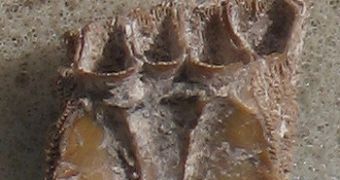Amongst many theories trying to explain the humans' physical appearance is that of the marine ape. But a new research reveals the oldest evidence of Homo sapiens living 164,000 years ago on the sea shore and feeding on sea food.
Besides the so-called 'beach party', the new research shows a much more advanced behavior in our species for those times than previously believed. The discoveries have been made in a cave in South Africa, near Pinnacle Point on the Indian Ocean's shores, close to Mossel Bay, and challenge the widespread concept that Homo sapiens underwent an accelerated cultural revolution resulting into modern living about 40,000 to 70,000 years ago. The march towards modern humans seems to have started even earlier.
Three cultural hallmarks were very advanced for that age: collecting and cooking seafood, the use of reddish pigments and tiny blade technology. Optical techniques dated the remains up to 164,000 years ago, plus or minus 12,000 years.
"Together as a package this looks like the archaeological record of a much later time period. This means humans were eating seafood about 40,000 years earlier than previously thought. And this is the earliest record of humans eating something other than what they caught or gathered on the land," said lead author Curtis Marean, professor of anthropology at the Institute of Human Origins at Arizona State University.
Sea food remains were brown mussels, black mussels, small saltwater clams, sea snails and even a barnacle, which could signal that whale blubber or skin was carried into the cave. The marine products could have been collected by women from the shore located 2-3 miles (3-5 km) away from the cave.
The sea food was cooked over hot rocks and when done, the shells opened just like in the case of modern-day mussel-steaming, pot excluded. The team tested the ancient cooking technique.
"We've prepped them the same way. They're a little less moist (than modern steamed mussels). They definitely lose some moisture." said Marean.
57 pieces of ground-up rock provided a reddish- or pinkish-brown pigment.
"That would be used for self-decoration and sending social signals to other people, much the way makeup is used now," he said.
Earlier but sporadic pigment use in Africa had been signaled before. Abundant sea food could have encouraged people to a sedentary life, getting leisure time for activities like body adornment.
Also rocks fashioned into small pointy tools had been sporadically signaled earlier.
"But having all three together shows a grouping of people that is almost modern. Seafood harvesting, unlike other hunter-gatherer activities, encourages people to stay put, and that leads to more social interactions," he said.
"Yet 110,000 years later, no such modern activity, except for seafood dining, could be found in that part of South Africa. That shows that the dip into modern life was not built upon," said Alison Brooks, a George Washington University anthropology professor not involved in this research.
"Blips of rather precocious kinds of behaviors seem to be emerging at certain sites," said Kathy Schick, an Indiana University anthropologist and co-director of the Stone Age Institute.
"Marean's work shows that anthropologists have to revise their previous belief in a steady "human revolution" about 40,000 to 70,000 years ago."

 14 DAY TRIAL //
14 DAY TRIAL //